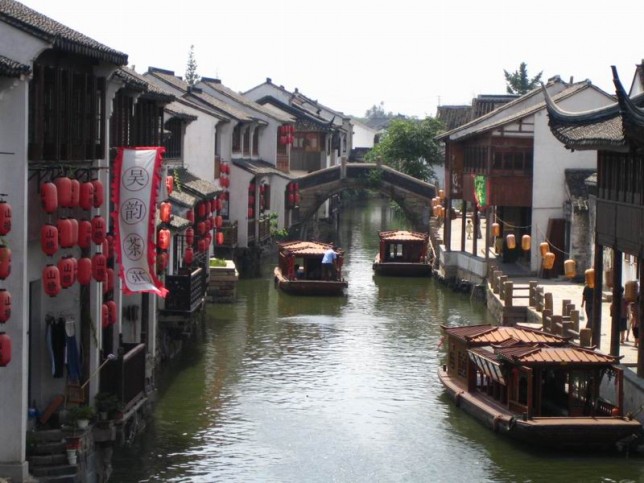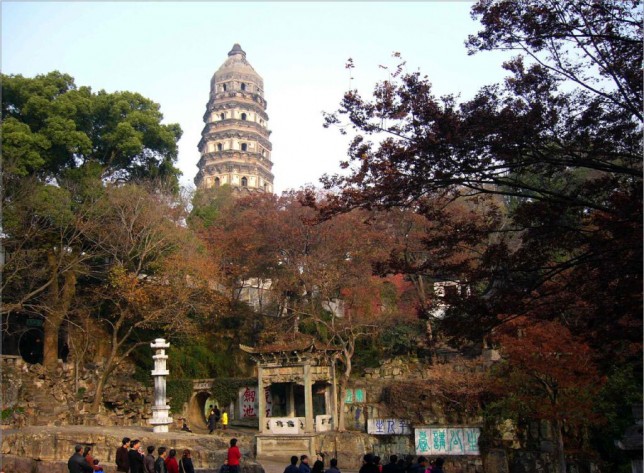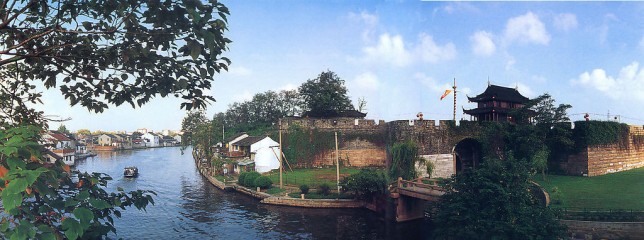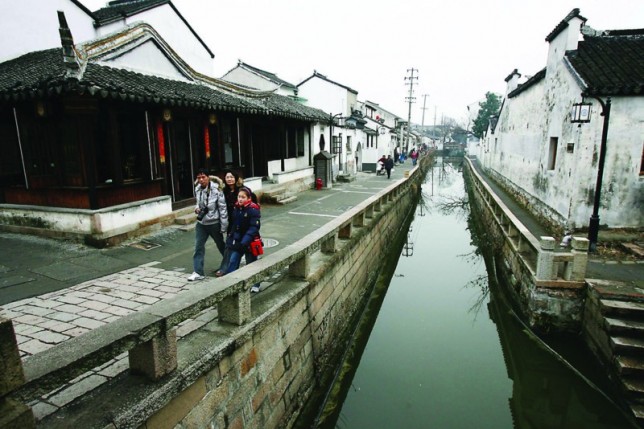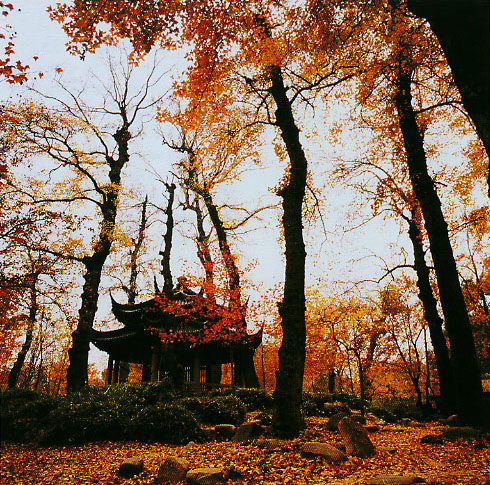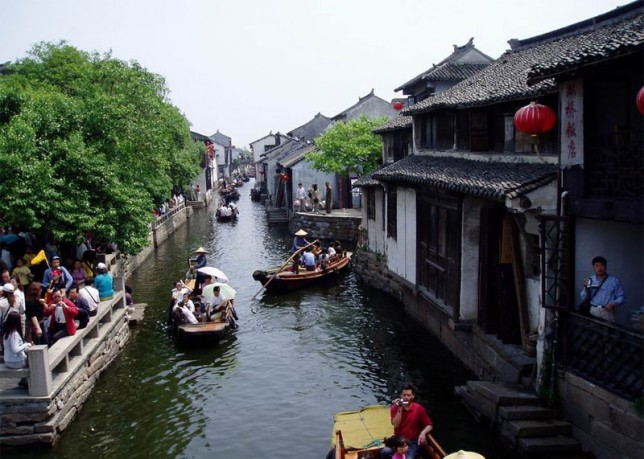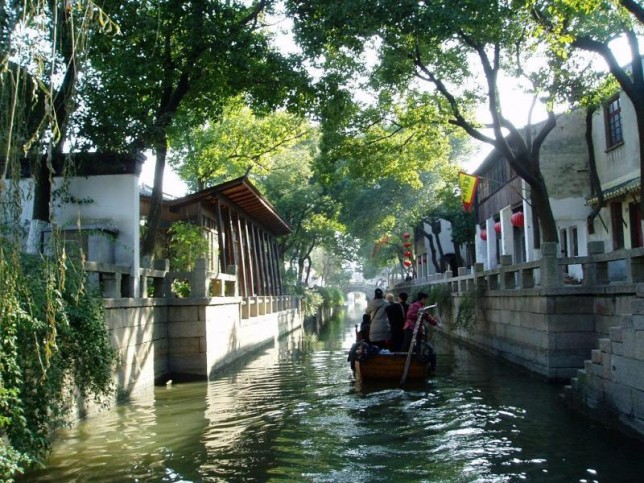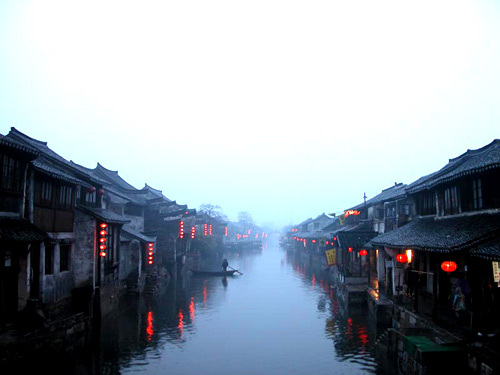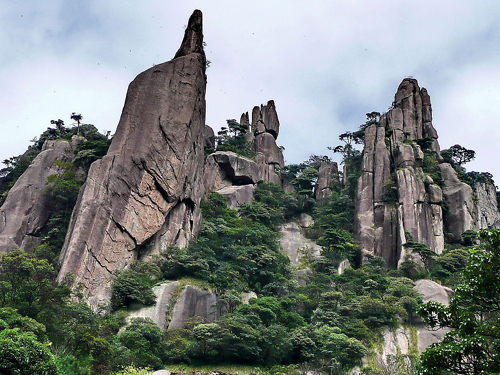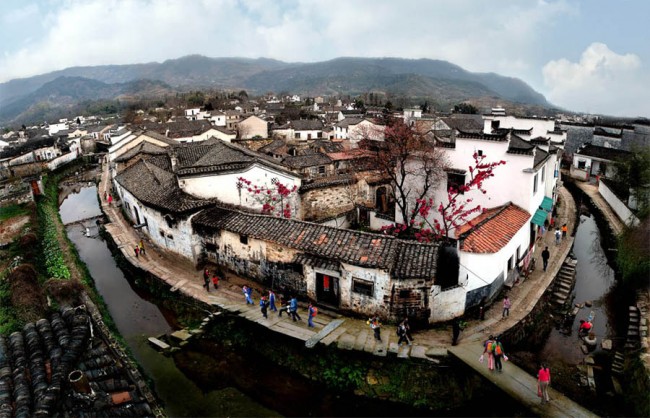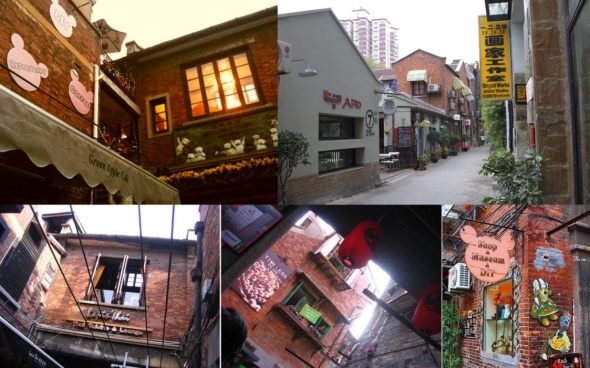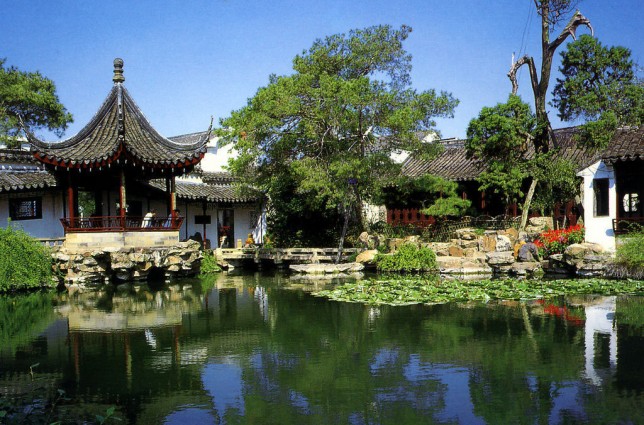Discover Suzhou: Famous Attractions & Ancient Towns
Besides the famous classical gardens mentioned in our previous article on Background & Classical Gardens, Suzhou still has a lot of Attractions, such as:
- Tiger Hill
A famous Song Dynasty poet, Su Shi said, “It is a lifelong pity if having visited Suzhou you did not visit Tiger Hill.”
Tiger Hill (虎丘, Hu Qiu), known also as Surging Sea Hill, is a large hillock covering some 14,100 square metres and is 36 metres in height. The Tiger Hill Pagoda is deemed to be the leaning Tower of China. Climbing the hill, you will find a number of historical sites some of which can be traced back over 2500 years to the founding of Suzhou, although the hill is relatively small it has rich history. And there are still some mysteries about the hill even in today.
These are some of the highlights you should not miss:
- The Tomb of King He Lu
- Tiger Hill Pagoda
- Sword Testing Stone and Sword Pool
- Thousand People Rock
- Lu Yu Well
Address: Tiger Hill Scenic Area, northwest of the ancient Suzhou city
Opening hours: 7:30am – 6:00pm
Entrance Fee:
Low season Oct.31th – Apr.15th 40RMB
High season Apr.16th – Oct.30th 60RMB
- Panmen Scenic Zone
At the southwestern end of the ancient city of Suzhou, the Panmen (盘门, Pan Men) Scenic Zone is famed for three tourist attractions: water and land city gates, Ruiguang Pagoda and Wumen Bridge.
The Panmen Gate is composed of two water crossings, two land gates, a citadel outside a city gate, a city tower and city walls on both sides, being the only such city gate in China. In some special festivals, there are several traditional activities to let people enjoy the old Suzhou atmosphere.
Address: No.1 Dongdajie
Opening hours: 8:00am – 4:45pm
Entrance Fee: 25RMB
- Pingjiang Historical Neighborhood
Pingjiang is a road filled with historical buildings. The people still follow the traditional way of life. There are cafes and hostels where you can take a seat next to the window and observe; if you want to explore the Pingjiang living style further, you can stay in a hostel. The north end of the road is link to the Humble Administrator’s Garden and Suzhou Museum.
Address: On the eastern side of the entrance of Guanqian Street, Pingjiang District
- Shantang Historical Street
Shantang Street(山塘街, Shan Tang Jie), popular for it has a long history of more than 1700 years; Baijuyi was the founder of Shantang.
Many people in different dynasties have lived here, so there are many ancient houses and historical legacies in this street. Now, in our century, 1700 years of history and culture have accumulated in Shantang. The Shantang Street in Suzhou attracts many tourists from home and abroad. Most of them travel along the canal, enjoying beautiful scenery. The whole street is about 3,500 metres long, the west end is link to Tiger Hill Scenic Area.
Entrance Fee:
Free for Visiting Street.
Ticket set 45 RMB including Yuhang hall, Quanzhou hall, Shaoxing Hall, Ancient stage, Shantang hall etc.
Boat: 25RMB (45mins)
Opening hours: 8:30am – 6:00pm
- Hanshan Temple
Have you ever heard of the poem A Night Mooring near Maple Bridge? Written by Zhang Ji, a poet of the Tang Dynasty (618-907), this poem describes the midnight bell ringing of the Hanshan Temple (寒山寺, Han Shan Si, Cold Mountain Temple).
Since then, the temple has become famous, especially for its gongs and Buddhism culture. Being one of the most famous temples in Chinese history, Hanshan Temple often boasts about its bell ringing. However, the best known bell described in Zhang Ji’s poem disappeared a long time ago.
The bell in the tower now was modeled on the previous one in 1904. Every year on New Year’s Eve in China’s lunar calendar, the bell is tolled to pray for the happiness and safety of the coming New Year. This festival attracts thousands of tourists both at home and abroad.
Address: 24 Hanshansi Lane
Opening hours: 7:30am – 5:30pm
Entrance Fee: 20RMB
- West Hill Scenic Zone
West Hill (西山风景区), a bright pearl on Taihu Lake, is known as Dongting West Hill, with a total area of 79.8 square kilometers, being the largest island on Taihu Lake, as well as the largest one on China’s freshwater lakes. Main tourist attractions in the scenic zone include Shigong Hill, Linwu Cave, Plum Garden, Bright Moon Bay Village,
Baoshan Buddhist Temple, Taihu Lake Bridge, Phoenix Terrace etc.
Entrance Fee:
30RMB for Linwu Cave;
28 RMB for Shigong Hill
- East Hill Scenic Zone
East Hill, also known as Dongting East Hill (东山风景区), is actually a peninsula in Taihu Lake.
The Tang and Song dynasties left a large number of cultural relics in the hill and in the Ming and Qing dynasties, this culture was re-discovered. Main tourist attractions in East Hill include Diaohua Tower, Zijin Nunnery, Mingshan Hall, Xuanyuan Palace, Ancient Luxiang Village, Qiyuan Garden, Future Agriculture and Forestry World, most of which can be reached along the round-the-hill road.
Entrance Fee:
35RMB for Diaohua Tower;
20 RMB for Qiyuan Garden,
20 RMB for Zijin Nunnery
- Tianping Mountain
With a square and flat mountaintop, the Tianping Mountain (天平山) is famed for oddly shaped rocks, clear springs and red maple leaves.
A scenic wonder, “10,000 Hu (Hu refers to upright features, especially the stones, but also the bamboo, trees, rocks, etc.) Facing the Skies” in the mountain is unique and appealing. Visitors can find some historical sites here also, such as a memorial archway with an inscription by Emperor Qianlong and Lord Fan Wenzheng Temple.
Address: In the western suburbs of New Area
Opening hours: 9:00am — 4:00pm
Entrance Fee: 10RMB, 18RMB during the Red Maple Leave Festival
***********************************************************************************************************
Being among the nation’s oldest cities, Suzhou is well known in China and abroad. One of its many treasures is its canals and water ways also known as Ancient Towns.
These are both inspiration to all for their grandeur and excellence, and testament to a colorful and rich history, having served as cradle for much of Suzhou’s heritage and livelihood. Suzhou’s success owes itself to the plentitude of this resource, and in modern Suzhou, water ways continue to flow gloriously.
Some ancient towns consisting of beautiful canals & bridge definitely worth visiting
- Zhouzhuang Ancient Town
In contrast to the huge buildings in the city, the water townships of Suzhou are designed in the typical style of southern China, renowned for their charming watery view and ancient residential houses.
Zhouzhuang (周庄, Zhou Zhuang), inheriting the splendid culture of Wu, is the best example of water country in China. There, you can enjoy a view like a Chinese landscape painting, just like that described by Ma Zhiyuan(a poet of Yuan Dynasty) in his lyric – a household on a creek flowing under a stone-bridge nearby.
On the southwestern corner of Kunshan City, Zhouzhuang is surrounded by Chenghu Lake, Changbaidang, Dianshan Lake, White Ant Lake and South Lake. It has eight streets and several dozens of stone bridges built in the Yuan, Ming and Qing dynasties. In 2003, Zhouzhuang was among the first group of “famous historical and cultural towns” in China.
The main attractions in Zhouzhuang include Double Bridges, Shen’s Residence, Zhang’s Residence, Milou Restaurant, and so on.
Opening hours: 8:00am — 5:00pm
Entrance Fee: 100RMB
Transportation: Tourist bus from Suzhou Railway Station or take a shuttle bus from Suzhou North Bus Station and Wuzhong District Bus stations to go to Zhouzhuang.
- Tongli Ancient Town
Tongli is a historic town located in Wujiang city, a short drive from Suzhou. Tongli (同里, Tong Li) is over 1000 years old and has only recently become known in tourist circles. The town is characterized by stone bridges and well preserved ancient architecture including private gardens, temples and houses.
Opening hours: 8:00am – 5:00pm
Entrance fee: 80RMB
- Luzhi Water Town
Luzhi (甪直, Lu Zhi) is one of the most authentic water towns on the Yangtze River Delta. It has nine main streets, paved with cobbles and granites. All the streets stand by the river and are lined by shops of various sizes, and all the civilian residences have whitewashed walls, black bricks and tiles, wooden doors and windows, and high ridges. The traditional costumes of Luzhi rural women show the typical features of the land of water in South China.
Opening hours: 8:00am — 4:30pm
Entrance Fee: 45RMB (including five historical sites, Baosheng Temple, Wansheng Rice Shop, the Shen’s Residence, the Xiao’s Residence and Wang Tao’s Memorial Hall)
- Mudu Ancient Water Town
Mudu (木渎, Mu Du) is a southern ancient waterside town in Suzhou and has unique structures separating it from other old waterside towns. Mudu is the only ancient garden town in southern China. There were more than 30 private gardens or parks in the Ming and Qing dynasties. The deep culture accumulation, the elegant garden environment and famous historic legends make this a firm favorite.
Entrance Fee: 60RMB
Opening hours: 7:30am — 4:30pm
Vocabulary
shī cí
诗 词 poem n.
cháo dài
朝 代 dynasty n.
pái fāng
牌 坊 memorial archway n.
fēng yè
枫 叶 maple leaves n.
sī jiā yuán lín
私 家 园 林 private garden n.

